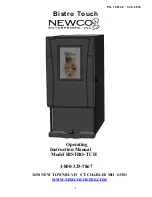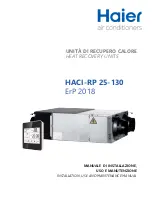
2
VRBS
Before initial usage of the RUD VRBS ple-
ase read carefully the safety instructions.
Make sure that you have understood all
subjected matters. Non-observance can
lead to serious personal injuries and mate-
rial damage and eliminates warranty.
1 Safety instructions
ATTENTION
Wrong assembled or damaged lifting points
as well as improper use can lead to injuries
of persons and damage of objects when
load drops.
Please inspect all lifting points before each
use.
• Remove all body parts (fingers, hands, arms,
etc.) out of the hazard area (danger of crushing or
squeezing) during the lifting process.
• Attention: When suspension ring pivots there is a
risk of pinching.
• RUD Lifting points VRBS must only be used by
instructed and competent persons considering
DGUV 109-017 and outside Germany noticing the
country specific statutory regulations.
• Do not exceed the working load limit (WLL) indica-
ted on the lifting point.
• No technical alterations must be implemented on
the VRBS.
• No people may stay in the danger zone.
•
Detention under a floating load is forbidden.
• Jerky lifting (strong impacts) should be prevented.
• Always ensure a stable position of the load when
lifting. Swinging must be prevented.
• Damaged or worn VRBS must never be utilised.
2 Intended use of the VRBS
RUD Lifting points VRBS must only be used for the
assembly at the load or at lifting means. They are
designed and intented to attach lifting means.
RUD Lifting points can also be used as lashing points
to attach lashing means.
RUD lifting points must only be used for the hereby
described usage and operation purpose.
3 Assembly- and instruction manual
3.1 General information
• Capability of temperature usage:
As of 07/2019: RUD Lifting points VRBS are suitable
for the temperature range from -40°C up to 400°C.
Up to 07/2019: RUD Lifting points VRBS are sui-
table for the temperature range from -20°C up to
400°C.
For the use within the following temperature range,
the WLL must be reduced by the following factors:
-40°C/-20°C up to 200°C
no reduction
200°C
up to 300°C
minus 10 %
300°C
up to 400°C
minus 25 %
Temperatures exceeding 400°C are prohibited!
In the unloaded state, VRBS lifting point together
with the load can be stress relieved by heat treating
(e.g. welded construction) once.
Temperature: < 600°C (one hour maximum).
• RUD lifting points VRBS must not be used with
aggressive chemicals such as acids, alkaline solu-
tions and their vapours.
• Please mark mounting position of lifting point with
a coloured contrast paint for better visibility.
• VRBS will be delivered with a pink powder coated
lifting ring.
3.2 Hints for the assembly
Basically essential:
• The material construction to which the lifting
point will be attached should be of adequate
strength to withstand forces during lifting wit-
hout deformation. The weld-on material must
be suitable for welding and the contact are-
as must be free from dirt, oil, colour, ect.
The material of the forged welding block is
N (1.0577+N (St52-3))
• The position of the lifting points must be carried
out in such a way that unintended movement like
turning or flipping will be avoided.
• For single leg lifts,
the lifting point should be
vertically above the centre of gravity of the load.
• For two leg lifts,
the lifting points must be
equidistant to/or above the centre of gravity
of the load.
• For three and four leg lifts,
the lifting points
should be arranged symmetrical around the
centre of gravity, in the same plane if possible.
• Load symmetry:
Determine the necessary WLL of each lifting point
for a symmetrical load by using the following phy-
sical calculation formula:
W
LL
= necessary WLL of lifting point /
single strand (kg)
G
= weight of load (kg)
n = number of load bearing strands
ß
= inclination angle of single strand
W
LL
=
G
n x cos ß
Number of load bearing strands:
Symmetric
Unsymmetric
two leg
2
1
three / four leg
3
1
Table 1: Load bearing strands (compare to Table 4)
•
Check finally the correct assembly (see chapter
4
Inspection / Repair / Disposal
).
























